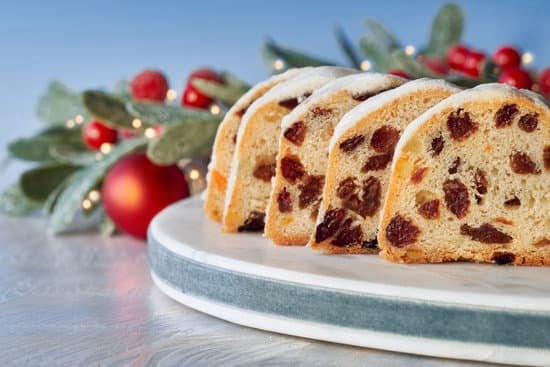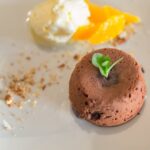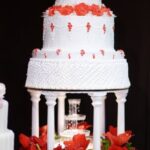Are you wondering, “how can I decorate a cake?” Decorating a cake is an essential aspect of creating a visually appealing and memorable dessert. Whether it’s for a special occasion or simply to satisfy a sweet craving, a beautifully decorated cake can elevate the entire dining experience. From basic frosting techniques to advanced fondant sculpting, cake decorating allows for endless creativity and personalization.
The significance of cake decoration extends beyond aesthetics. It adds an element of artistry and craftsmanship to the baking process, making the end result not only delicious but also visually stunning. A well-decorated cake can serve as the centerpiece of any celebration, leaving a lasting impression on guests and creating unforgettable memories. In this article, we will explore the importance of cake decorating and provide valuable tips and techniques for achieving professional-looking results at home.
In the following sections, we will discuss essential tools and materials needed for cake decorating, basic and advanced techniques to master, choosing the right colors and designs for different occasions, as well as tips for perfecting your cake decorating skills. Additionally, we will cover how to personalize cakes for special events through custom designs and edible decorations while emphasizing creativity and practice as key elements in mastering the art of cake decoration.
Essential Tools and Materials for Cake Decorating
When it comes to cake decorating, having the right tools and materials is essential for creating stunning and professional-looking cakes. Whether you’re a beginner or an experienced baker, having a well-stocked collection of cake decorating supplies is crucial for bringing your creative cake designs to life.
Tools for Piping and Frosting
One of the most important tools for cake decorating is the piping bag and various tips. Piping bags allow for precise application of frosting, while different tips can create a variety of designs and textures. Other essential tools include offset spatulas for smooth frosting application, cake turntables for easy rotation while decorating, and icing smoothers for achieving clean and polished finishes.
Fondant and Gum Paste Supplies
For those looking to work with fondant or gum paste, having a few key supplies on hand is crucial. Rolling pins specifically designed for fondant work can help achieve even thickness, while fondant cutters and shaping tools are great for creating intricate designs or fondant figures. Additionally, edible food coloring gels are necessary for tinting fondant or gum paste to the desired color.
Edible Decorations and Finishing Touches
To add the finishing touches to your cake design, consider stocking up on edible decorations such as edible pearls, sprinkles, dragees, and edible glitter. These items can add texture, sparkle, and dimension to your cakes while remaining safe to consume.
In order to achieve professional-looking cake decorations, it’s important to invest in high-quality tools and materials. By having these essential supplies on hand, you’ll have everything you need to create beautiful cakes that are sure to impress any crowd. So when asking yourself “how can I decorate a cake,” just remember that having the right tools is half the battle won.
Basic Cake Decorating Techniques
Decorating a cake is an essential part to make it visually appealing and memorable. The way a cake is decorated can turn it from an ordinary dessert to an eye-catching centerpiece at any event. Whether it’s a birthday, wedding, or just a simple gathering, the decoration of a cake plays a crucial role in making it stand out and leave a lasting impression on everyone.
To start with, it is important to have the essential tools and materials for cake decorating. Some of the basic tools include piping bags, tips, offset spatula, turntable, and cake leveler. Materials needed would be buttercream or fondant, food coloring gels, edible decorations like sprinkles and pearls, and more. These tools and materials will help in executing different decorating techniques for cakes.
One of the most commonly used techniques is buttercream piping. This involves using a piping bag with various tips to create different designs on the cake using buttercream frosting. Fondant covering is another basic technique where a smooth layer of fondant is rolled out and draped over the cake for a clean finish.
Basic frosting application can also be achieved by practicing smooth spreading and even coating of frosting on the cake layers. By mastering these basic techniques, anyone can learn how to decorate a cake beautifully for any occasion.
By understanding these basic techniques on how to decorate a cake plus having the right tools and materials at hand, anyone can set off confidently onto their journey as a novice baker or decorator. Practice makes perfect – don’t hesitate to experiment with colors and designs while being creative.
With time and effort put into mastering these techniques, decorating cakes will become second nature as you create stunning masterpieces that are sure to impress all your family and friends. Remember that every skill takes time to develop but the results will be all well worth it when you see your beautifully decorated cakes being enjoyed by everyone around you.
Advanced Cake Decorating Techniques
Once you have mastered the basic cake decorating techniques, you may want to challenge yourself with more advanced methods to take your cake designs to the next level. Intricate piping, sugar flowers, and advanced fondant sculpting are just a few examples of how you can elevate your cake decorating skills.
Intricate piping involves using a piping bag and various decorating tips to create detailed patterns and designs on the surface of the cake. This technique requires precision and practice, but it can result in stunning and visually appealing cakes. Sugar flowers, on the other hand, involve shaping edible sugar paste into delicate floral shapes to adorn your cake. With patience and attention to detail, you can create lifelike flowers that add elegance and beauty to any dessert.
Advanced fondant sculpting allows for the creation of intricate designs and three-dimensional figures that can truly make a cake stand out. From sculpting animals and characters to crafting elaborate scenes, this technique offers endless possibilities for creativity. While these advanced techniques may seem daunting at first, with dedication and practice, you can master them and use them to personalize and enhance your cakes for special occasions.
As you explore these more advanced cake decorating techniques, remember that creativity is key. Experiment with different designs, colors, and textures to discover unique ways to decorate your cakes. By honing your skills through practice and embracing your creativity, you can create stunning and memorable cakes that will impress anyone who sees or tastes them.
Remember to also be patient with yourself as learning these advanced techniques may take time – but the results will certainly be worth it.
Choosing the Right Colors and Designs
When it comes to cake decorating, choosing the right colors and designs is crucial in creating a visually appealing and memorable cake. Whether it’s for a birthday, wedding, or any special occasion, the colors and designs of a cake can significantly impact the overall presentation. Selecting the appropriate color palette and design elements can elevate a simple cake into a stunning work of art.
One important consideration when choosing colors for cake decoration is to ensure that they complement each other. It’s essential to have a good understanding of color theory and how different hues work together.
For example, complementary colors, such as blue and orange or purple and yellow, can create a vibrant and harmonious look when used in cake decorating. Additionally, understanding the psychology of colors can help in creating cakes that evoke specific emotions – for instance, using red for passion or love, or green for freshness and peace.
In addition to color selection, choosing the right designs for a cake is equally important. The design of a cake should be appropriate for the occasion it is intended for. For instance, intricate floral designs may be more suitable for weddings, while playful and colorful designs may be better suited for children’s birthday parties. By understanding the theme and purpose of the event where the cake will be served, decorators can choose designs that align with the overall aesthetic.
Whether you are an experienced decorator or just starting out in cake decorating, practicing color selection and design choices will inevitably improve your skills over time. With some knowledge of basic design principles and experimenting with different color combinations, you can create beautiful cakes that leave a lasting impression on those who see them.
| Importance of Color | Choosing Designs |
|---|---|
| Creating visually appealing cakes | Selecting appropriate designs |
| Eliciting specific emotions with colors | Aligning designs with occasions |
| Understanding color theory | Practicing with different themes |
Tips for Perfecting Cake Decorating
Smooth Frosting and Sharp Edges
One of the most important aspects of cake decorating is achieving a smooth, flawless finish on your cakes. To achieve this, ensure that your buttercream or frosting is at the right consistency before applying it to the cake. Use a bench scraper to smooth out the surface and create sharp edges. Practice makes perfect, so don’t be discouraged if you don’t get it right the first time.
Avoiding Common Decorating Mishaps
While decorating a cake, there are a few common mishaps that can occur, such as air bubbles in fondant or uneven frosting. To avoid these issues, make sure to knead your fondant thoroughly before rolling it out to prevent air bubbles. When frosting a cake, start with a thin layer of icing as a crumb coat to prevent crumbs from getting into the final layer of frosting.
Practice Makes Perfect
The key to perfecting cake decorating is practice. The more you practice, the more comfortable and skilled you will become at decorating cakes. Don’t be afraid to experiment with different techniques and designs. Over time, you will develop your own unique style and flair for cake decorating.
By following these tips for perfecting cake decorating, you can enhance your skills and create beautifully decorated cakes that will impress your friends and family. Remember that creativity is also essential in cake decorating, so don’t be afraid to think outside the box and try new ideas to make your cakes truly stand out.
Utilizing Edible Decorations
When it comes to cake decorating, utilizing edible decorations can truly take your designs to the next level. Edible decorations not only add a pop of color and texture to your cakes but also provide an opportunity for creativity and personalization. Whether you are decorating a birthday cake, wedding cake, or any special occasion cake, knowing how to use edible decorations effectively can make all the difference in the final presentation.
Here are some popular edible decorations that you can use to enhance your cake designs:
- Sprinkles: These tiny, colorful confections come in a variety of shapes and sizes, adding a fun and festive touch to any cake.
- Sugar pearls: Small edible beads that can add elegance and sophistication to your cake design, perfect for wedding cakes or elegant celebrations.
- Edible glitter: A shimmering addition that can give your cakes a touch of glamour, ideal for special occasions like New Year’s Eve or anniversary parties.
Incorporating these edible decorations into your cake designs requires careful planning and consideration. You want to ensure that they complement the overall theme and color scheme of the cake while adding visual interest. When using multiple types of edible decorations on a single cake, it’s essential to balance them harmoniously for a cohesive look.
When utilizing edible decorations, it’s important to consider the flavor profile of the cake as well. Ensure that the taste of the decorations complements the flavor of the cake rather than overpowering it. With practice and experimentation, you can master the art of using edible decorations to create visually stunning and delicious cakes.
Personalizing and Customizing Cakes
Decorating a cake is more than just making it visually appealing. It’s about creating a special, personalized treat that reflects the occasion and the personality of the recipient. Personalization and customization are essential elements of cake decorating that allow you to create unique and memorable masterpieces.
When it comes to personalizing and customizing cakes, the possibilities are endless. Whether it’s adding a monogram, incorporating edible images, or creating custom designs, there are countless ways to make a cake truly one-of-a-kind. Here are some ideas for personalizing and customizing cakes:
- Custom Designs: Use stencils or freehand techniques to create custom designs on the surface of the cake. This can include anything from simple patterns to intricate artwork.
- Monograms: Adding a monogram to a cake is an elegant way to customize it for a special occasion, such as weddings or anniversaries. Monograms can be created with fondant, piped buttercream, or even edible markers.
- Edible Images: Incorporating edible images onto a cake allows for endless possibilities when it comes to customization. You can print photos, logos, or any other image onto edible paper using edible ink and then transfer them onto the cake’s surface.
Conclusion
In conclusion, learning how to decorate a cake is an essential skill for anyone who wants to create visually stunning and memorable desserts. The art of cake decorating not only adds aesthetic appeal to a cake but also allows for personalization and customization. By mastering various techniques and utilizing the right tools, anyone can elevate their baking game and impress friends and family with their beautiful creations.
In order to successfully decorate a cake, it is important to have the essential tools and materials on hand. From piping bags and tips to edible decorations, having the right supplies is crucial. Additionally, practicing basic and advanced decorating techniques such as buttercream piping and fondant sculpting will help improve your skills and confidence in creating beautifully decorated cakes.
Ultimately, perfecting the art of cake decorating requires practice, creativity, and patience. As you continue to explore different color combinations, designs, and decorating techniques, you will become more confident in your abilities. So if you’ve ever wondered “how can I decorate a cake?”, remember that with dedication to practicing these methods you’ll be able to create not just visually stunning cakes but also delicious ones too.
Frequently Asked Questions
What Can I Use to Decorate a Cake at Home?
At home, you can use various tools and ingredients to decorate a cake. Some common items include frosting or icing, edible sprinkles, chocolate shavings, fresh fruit, edible flowers, and piping bags with different tips for creating different designs.
What Are the 7 Different Cake Decorating Techniques?
The 7 different cake decorating techniques are: icing or frosting a cake smoothly, piping decorations such as borders and flowers with a piping bag, using fondant to cover the cake and create detailed designs, creating textured effects with buttercream or royal icing, using stencils for intricate designs, painting on cakes with edible food coloring, and adding embellishments like pearls or dragees.
What Are the 5 Kinds of Cake Decorating?
The 5 kinds of cake decorating are: buttercream decorating which involves using buttercream frosting to create various designs and textures on a cake’s surface; fondant decorating which uses rolled out fondant to cover cakes smoothly and create detailed decorations; royal icing decorating which involves using a hard white icing made from egg whites to create intricate designs; gum paste decorating which uses pliable sugar paste to create lifelike floral decorations; and marzipan decorating which involves using almond paste to cover cakes and create sculpted decorations.

Welcome to our cake decorating blog! My name is Destiny Flores, and I am the proud owner of a cake decorating business named Cake Karma. Our mission is to provide delicious, beautiful cakes for all occasions. We specialize in creating custom cakes that are tailored specifically to each customer’s individual needs and tastes.





